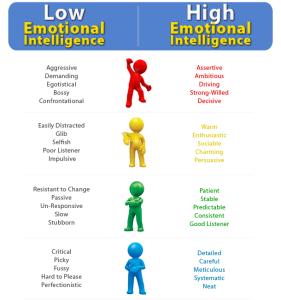We live in a society where “Casual Friday” has morphed into Casual Everyday. Some companies have even begun a “Formal Friday” to target dressing professionally. As our workplaces become more casual, is our behavior following suit?
Professional presence is vital to any company getting and keeping clients. Having a professional presence can help you stand out in the crowd of emails, voicemails, business meetings and social occasions.
Poise, self-confidence and self-control make up professional presence. Follow these seven tips to establishing a professional presence:
1.Be Positive
A positive workplace increases productivity. Everyone has bad days, but taking it out on anyone at the office—be it your coworker or a customer—will produce negative responses and results. The first step to having a professional presence is to be optimistic.
2. Be on Time
Being late communicates that your time is more important than someone else’s. Everyone is busy. Punctuality is vital to a professional presence. And if you are late, blaming the traffic, your family or your car is simply making an excuse. Apologize sincerely without excuses if you are late. Being professional means being on time.
3. Get Names Straight
If you can remember someone’s name after only meeting them once, you will make a great impression. However, few of us have that talent. It is much better to say “Please tell me your name again” than to guess and call your potential client or coworker the wrong name. Calling someone by their name is courteous and professional. When sending an email, spell the name correctly.
4. Make Clients Feel Valued
Having a professional presence includes developing the ability to make others feel valued. Using the correct name is the first step. Asking your client questions communicates that you care. Everyone enjoys talking about themselves. Listen and repeat back little bits of the information they give you. And always include a smile in your conversation. When people feel valued, they are more likely to trust you and come back again.
5. Create Well-Written Communication
There is no excuse for sloppy emails or badly written business letters in a professional environment. Have someone edit written communication before it leaves your business. Spelling mistakes can be a strike against your professional presence. Avoid bad grammar. Create professional letterhead. Design a standard and clean signature for office emails. An impression will be established through your written communication. It is up to you if it will be negative or positive.
6. Use Etiquette and Skill on Phone Calls
Speak slowly and clearly. Put energy and a smile into your voice so that the warmth of it will be communicated. Be prepared by having whatever information you might need close to you. Think about what you are going to say before calling anyone. A brief and business-like phone call projects a professional presence. Finally, close your call as professionally as you began. Wait until they hang up before you do.
7. Dress Appropriately and Groom Well
Even though many companies are much more casual than they used to be, make sure you are following the dress code appropriately. Ask the human resources team for clarification if needed. Being fashionable at work does not always make for a professional presence. Being well groomed does. Good taste and fashion are not always synonymous. Follow the rules carefully.
A professional presence is one that exudes confidence. By following these seven tips, you can establish yourself as one who takes care of others and themselves in order to create a workplace environment that propels the company to success. Whether your company has Casual Friday or Formal Friday, work to make a professional presence every day.
Resources:
http://www.reuters.com/article/2012/02/13/us-etiquette-commandments-idUSTRE81C10F20120213
http://www.wikihow.com/Make-People-Feel-Good
http://www.evancarmichael.com/Sales/486/Increase-your-professional-presence-on-the-phone.html




